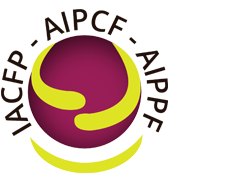Specificity of our model in the TPPF. The link field. Cotherapy and use of analytical psychodrama techniques
Ana Packciarz Losso and Roberto Losso (Buenos Aires, Argentina; Bologna, Italy)
Technique : We work in symmetrical heterosexual cotherapy : a couple of analysts of different sexes and in hierarchical equality, which, among other things, favors the presence of a “second look” in the bonding field.
The co-therapeutic couple can function in some way as a communication model, in which there may be dissent, but a dissent that is not dilemmatic but dialectical, which allows the positions of both therapists to be integrated as complementarity. Such functioning helps to differentiate legitimate, normal and inevitable dissent within any couple in which there is differentiation (that is, autonomy) between the subjects, from disconfirmation , also functioning as transfer through, as a parental couple model, which, From this transference place, you can create the conditions to allow the couple or family to live in the here and now of the field, unprecedented experiences that enable them to acquire new ego resources.
We listen to verbal communications and also take into account non-verbal language, both from patients and analysts.
As therapeutic resources we use: interpretations aimed at the group, subgroups within the family and individuals, constructions ( mainly about the mythical history of the family), and psychodramatic techniques : from the detection of scenes that are presented in the linking field ( pathogenic scenes and key scenes ), we work with dramatizations starting from the manifest scene , trying to reach the latent scene. Dramatizations are particularly useful for exploring inter- and transgenerational links (in the dramatization, characters from the mythical family history are “summoned”).
Bibliography
- BARANGER, M. and W. (1961-62): The analytical situation as a dynamic field. Rev. Uruguaya Psicoanál., t. 4, no. 1.
- LOSSO, R. & PACKCIARZ LOSSO, A. (1982a): Chronicle of the psychoanalytic psychodramatic treatment of a couple. In: Developments in group psychotherapy and psychodrama (ed. JL Marti i
- Tusquets and L. Satne). Barcelona, Gedisa.
- LOSSO, R. & PACKCIARZ LOSSO, A. (1982b): Lo psychodramma psychoanalitico di coppia. Family Therapy Notizie , n. 1.
- LOSSO, R. (1999a): Field theory and family and couple psychoanalysis. In: Kancyper, L. (comp): Thinking again with Willy and Madeleine Baranger. New developments . Buenos Aires, Lumen. p. 237
- LOSSO, R. (2000): Le mythe familial, source des transferts familiaux . The family Divan .
- LOSSO, R. (2001): Family Psychoanalysis . Theoretical-clinical tours . Buenos Aires, Lumen. Italian translation, Psicoanalisi della famiglia. Percorsi teorico-clinici. Milano, Franco Angeli, 2000.
- LOSSO, R. (2006): Intrapsychic, Interpsychic and Transpsychic Communication . In; New Paradigms for treating relationships; ( ed. Scharff, JS and Scharff, D.)- Lanham, MD, Janson Aronson, pp- 33-42
- LOSSO, R. & PACKCIARZ LOSSO, A. (2006): Divorce Terminable and Interminable . in; New Paradigms for treating relationships; ( ed. Scharff, JS and Scharff, D.)- Lanham, MD, Janson Aronson, pp. 119-131
- PICHON RIVIERE, E. (1971): From Psychoanalysis to Social Psychology , Buenos Aires, Galerna.
